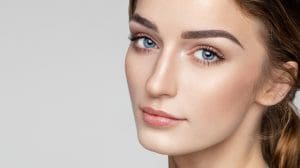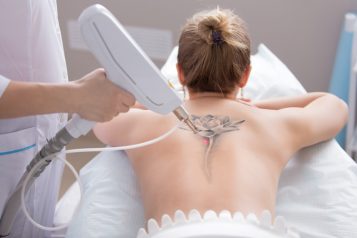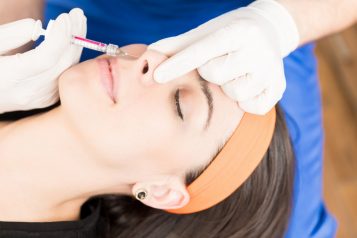Hair restoration has advanced by leaps and bounds in recent years, and these procedures have become extremely popular among men and women alike. “The days of obvious ‘hair plugs’ and visible scarring are over, and the latest hair restoration techniques deliver fuller, thicker hair with natural-looking results,” says Dr. Miguel Mascaró, founder of the Delray Beach Hair Transplant Center in Delray Beach, Florida. There are several follicular unit extraction (FUE) technologies that extract small clusters of up to four (or so) hairs before a physician or specialist meticulously transfers them to balding or thinning areas of the scalp—but many patients are unaware that the scalp is just one area of the body that can benefit from hair restoration. “These procedures can be used to improve hair loss beyond the head as well, and new hair growth is permanent once the healing process is complete, as if the hairs were always there,” he shares.

Eyebrows
Over-plucking, certain medical conditions and the natural aging process can lead to thin, sparse eyebrows. “Many patients try brow pencils, microblading and permanent makeup to recreate the appearance of fuller brows, but nothing looks more natural than real hair,” explains Dr. Mascaró. The only caveat: Natural eyebrows only grow to a certain length, so transplanted hairs from another area of the body may need to be trimmed regularly. Dr. Mascaró adds, “The texture and growth length of transplanted hairs can be controlled by harvesting hair from areas such as the nape of the neck or even the legs.”

Facial hair
Some men are naturally unable to grow an even beard, moustache or goatee, and hair transplantation can be used to improve overall thickness as well as less dense or hairless patches. According to Dr. Mascaró, “Hair transplants can be an effective way for men to camouflage acne scars on the face as well.” A skilled hair-restoration specialist will try to “match” the thickness of donor hairs and existing hairs in the area to be treated for the most natural-looking outcomes.
Scars
The scar tissue that replaces normal, healthy skin after an injury or surgery damages hair follicles in the affected areas. Dr. Mascaró says, “A hair transplant can help restore hair growth to improve the appearance of existing scars and hide any color or texture irregularities. However, all scars are unique, and a consultation with a highly experienced hair restoration specialist is the only way to determine if this is a viable option.”

Sideburns
In some instances (usually at the hands of a sub-par plastic surgeon), a facelift can alter the position of patient’s hairline and lead to an over-pulled appearance. “Hair transplant procedures can be used to restore a more natural look, and they are especially effective for the sideburns and areas in close proximity to the ears. When patients experience this unfortunate outcome after a facelift, many are happy to learn that hair restoration is a minimally-invasive solution,” Dr. Mascaró explains.
For more information, visit Dr. Brian A. Levine's social media:

























